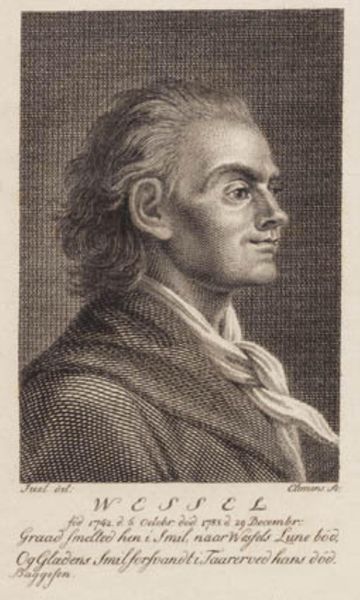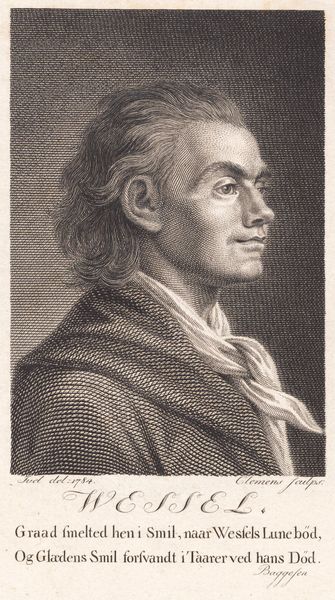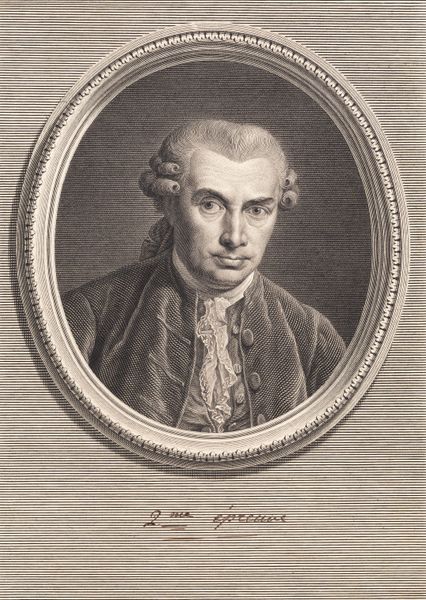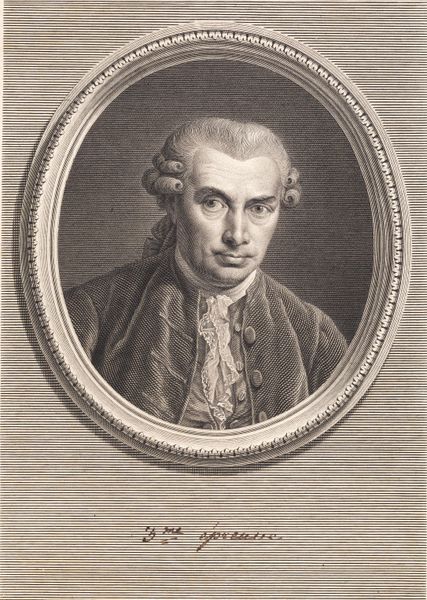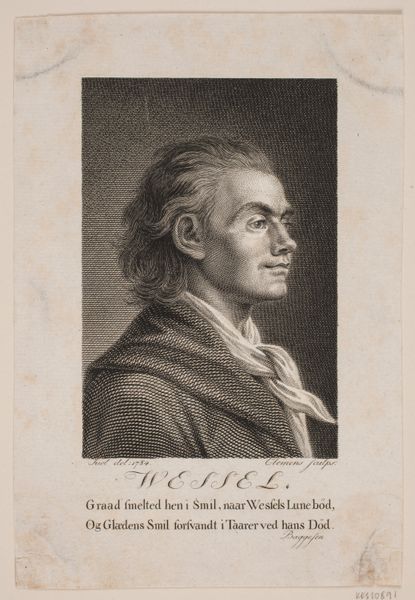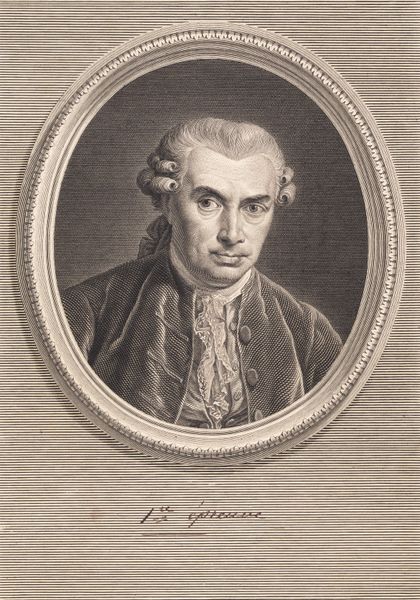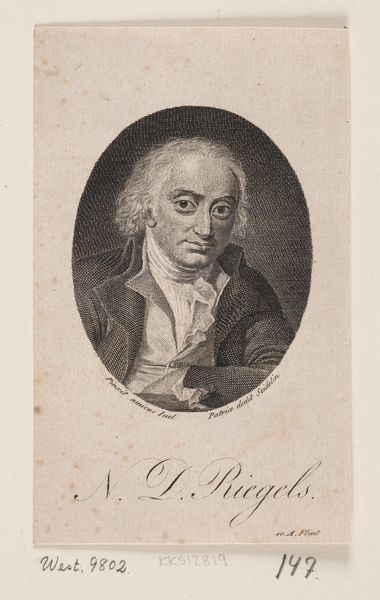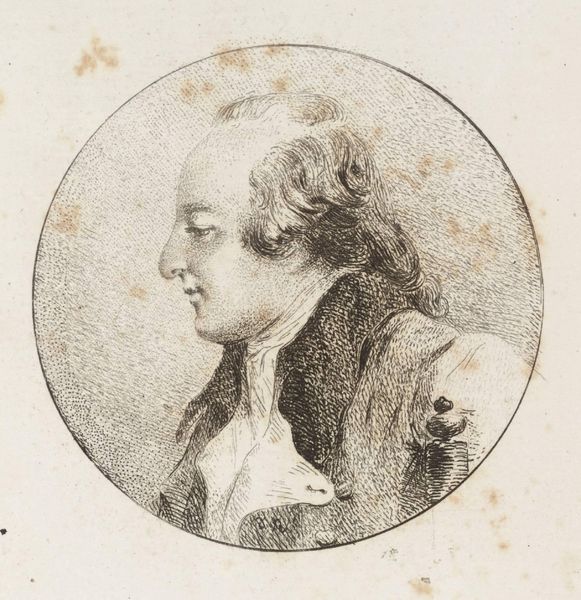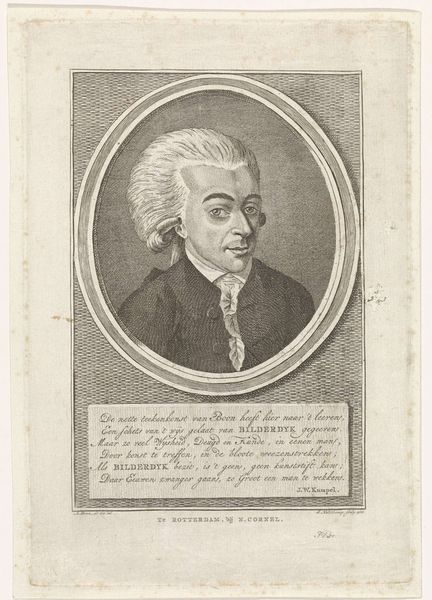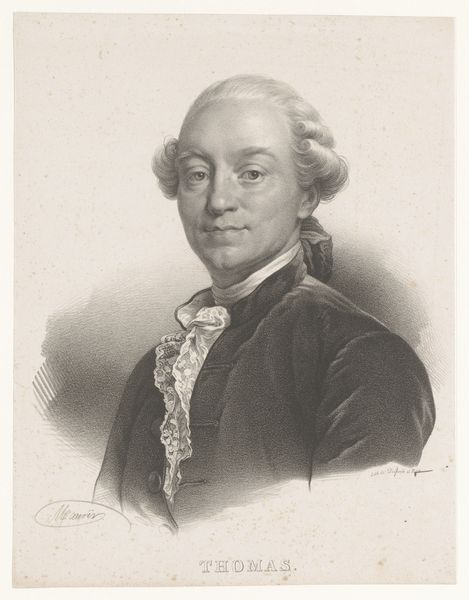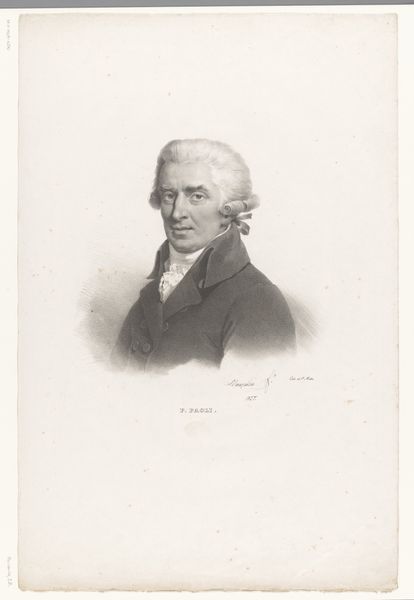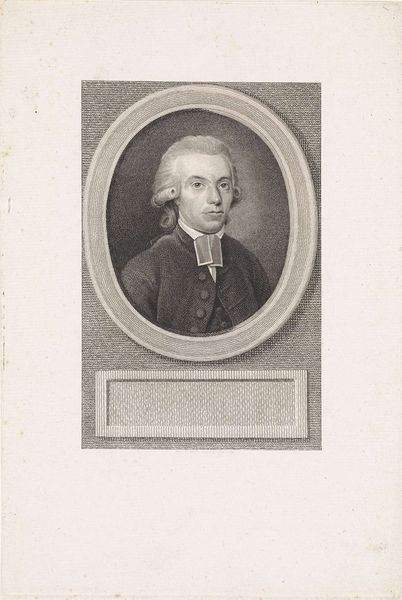
print, etching
#
portrait
#
neoclacissism
# print
#
etching
#
realism
Dimensions: 212 mm (height) x 151 mm (width) (bladmaal), 149 mm (height) x 98 mm (width) (plademaal), 86 mm (height) x 58 mm (width) (billedmaal)
Editor: Here we have a print, an etching actually, by J.F. Clemens, depicting Joh. H. Wessel, active between 1748 and 1831. I'm immediately struck by the incredible detail achieved in this monochromatic portrait, especially the textures. What do you see when you look at it? Curator: It's fascinating how Clemens employs a strategic arrangement of line and shadow to create volume and texture within the graphic space. Notice the density of the hatching used to model Wessel's face and clothing, versus the relatively blank area serving as the background. How does this interplay of dark and light affect the perception of depth and form? Editor: It makes him pop out of the background. All those tiny lines give the illusion of three-dimensionality, even though it’s flat. What’s the significance of the linear patterns of his clothing? Curator: The repetitive lines forming the sitter’s attire not only simulate the texture of the garment but also draw the eye toward the focal point – the portrait’s visage. The eye travels upward. Observe the circular gesture implied by the scarf’s knot at his neck. Editor: Oh, I see that now! That looping is a great touch. It does keep me locked on the portrait's face. Thanks, I wouldn't have caught that on my own. Curator: Precisely, art is not solely about what we see, but how our eyes and minds make interconnections. Analyzing visual elements provides great value and deeper appreciation.
Comments
No comments
Be the first to comment and join the conversation on the ultimate creative platform.
